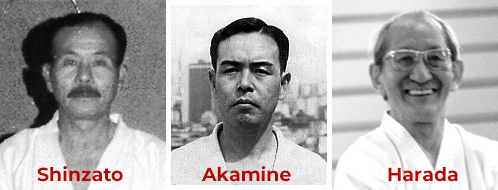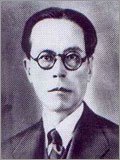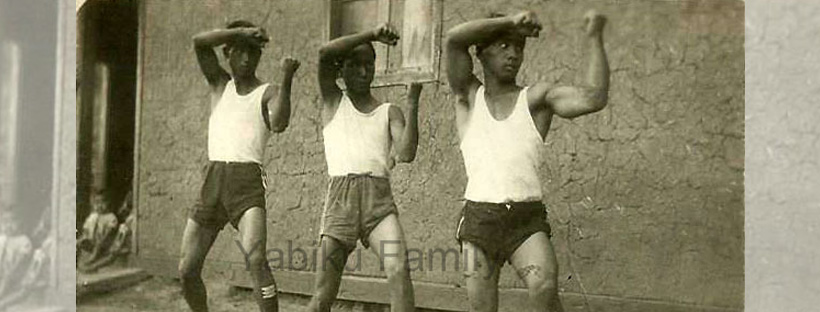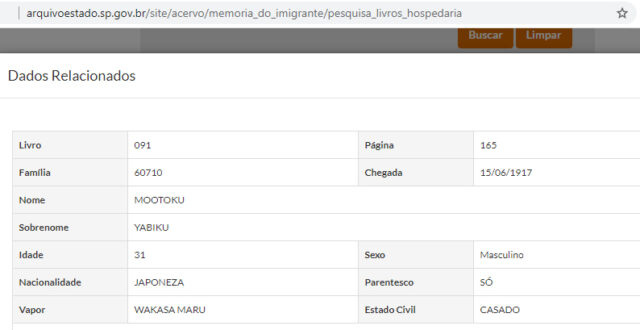Recently, the website of the magazine Adventures in History published the article Did karate arrive in Brazil before it was disseminated in Japan?, exploring some historical aspects of our art and its evolution until it reached our country. It is always good to see Karate being approached in broader vehicles, but dealing with the sinuous history of this art is not an easy task and, because of that, everything that reaches us needs to be read with a critical sense. In the case of this specific text, there are some historical and conceptual inaccuracies that I found relevant to comment on.
An example is a passage that calls Tode (唐 手) “Chinese Karate”. Unlike what is said in the text, it is not a martial art directly from China: Tode is simply the old name of Karate, martial art from Okinawa/Ryukyu. Tode was heavily influenced by the arts in the Fujian region of China, but the people of Ryukyu reframed what they learned from the Chinese and established their unique martial art. Calling it Chinese Karate does not make sense, not least because “Karate” is another possible reading for the “Tode” kanji.
The probable confusion is because Tode actually means “Chinese hand”, to highlight the influence of Chinese styles. When the name was changed to Karate, what happened was a change from kanji To/Kara (唐) to Kara/Sora (空), that means emptiness or heaven. “Chinese hand” (唐 手) then became “empty hand” (空手) emphasizing the philosophical aspect of art and serving as a way for mainland Japan (China’s rival) to more easily accept the martial art from Okinawa.
But the main point of the Adventures in History article, which must be seen carefully, is to say that Karate/Tode began to be taught in Brazil in the first wave of Japanese immigration, in 1908. The text says:
Kasato-Maru docked at the Port of Santos, 40% of its 781 passengers were from Okinawa Province, a place where, since 1902, Karate was taught as part of the physical education grid in primary schools.
(…)
In the colonies, the Japanese taught the Art of the Empty Hand, in the prescribed terms of Okinawa, to the young Japanese and the few Brazilians who were interested. The practice of Karate-Dô, until then, was developed informally in Brazil.
It is not a simple matter to state categorically. The fact that Okinawan immigrants arrived at that time and that Karate/Tode was already introduced in schools makes the reasoning valid and meaningful, but the author does not present any record to prove this. When we have no concrete evidence, we enter the field of speculation, not historical fact. It would not even be the first report that I hear of Japanese immigrants who practiced some martial art in their homeland and, when coming to Brazil, had their work as their most urgent and immediate matter.
That said, an addendum: if anyone has any indication of Karate being practiced or taught by the first Japanese immigrants, it would be incredible. I would like to be informed and write about it.
It is a fact that Karate arrived here through Japanese immigration, but the record is not from 1908: Recently, a record emerged as the first art in the country, in 1919, during a presentation in the city of Campo Grande, State of Mato Grosso do Sul (read more here) ¹. The records on open training and work to publicize the art are all from the 50s. Among the best known pioneers are Yoshihide Shinzato, who began to teach informally in his colony and to demonstrate from 1954 ; Mitsuke Harada started teaching in 1956; and Shikan Akamine, who started teaching in 1958 and formally established the country’s first Karate school, the Brazilian Karate Association (ABK), in 1959. In addition to these more well-known, there is an even older one.

The first record of a Karate master in Brazil is that of an uchinanchu, Motoku Yabiku. There is a video recording of his students’ presentation at the Ginásio do Pacaembu, in 1951, as can be read in this post I made earlier, with translation of an article by Naoki Motobu. The date of the video places him as the first known Karate teacher in Brazil. Unfortunately he passed away shortly after this presentation, as reported by Yamauchi Seihin:
(Yabiku Mōtoku) worked unreasonably hard to present karate and died from fatigue. His disciples built a wonderful grave, and I carved a song on the grave.
While I was traveling around the world, the one who looked most forward to see me was Yabiku in Brazil, but writing for his grave without seeing him is a strange fate. His wife Kame rushed to say “This is my husband’s will.” In a Japanese villa in Sao Paulo, I spend the night composing the poem to be engraved on the monument.
Music is a weapon that leads to peace.
Atomic bombs can be blown away with this.

Motoku Yabiku
Motoku Yabiku was an important figure for the Okinawan community in Brazil and in 1922 and founded a neighborhood in Lins, in the rural area of São Paulo, as stated in the e-book The Japanese Immigration Saga in Lins, by Manabu Mabe. The information is complemented by a post made by karateka Alaumir Mainardes, who wrote:
Motoku Yabiku Sensei student of Kentsu Yabu Sensei (1866-1937).
Probable year of birth: 1886
Probable year of death: 1951
He immigrated to Brazil in 1918.
Born in Sashiki (Sashiki-cho), a city located in the Shimajiri district, Okinawa, Japan.
Motoku Yabiku Sensei came to Brazil in a more privileged condition than the other immigrants because he and his wife (Kame Yabiku) were teachers in Okinawa.
Motoku Yabiku Sensei founded a Yabiku neighborhood in Lins, São Paulo. The colony was called “Yabiku Shokuminti”.
Motoku Yabiku Sensei won from President Washington Luís deed of land in the “future capital” of the country yet to be built (Brasilia), but he never went after his rights.
The deed was reported in a report in the newspaper Diário do Grande ABC.
Going a little further, thanks to data shared in a Ryukyu Martial Arts discussion group,² I was able to find Motoku Yabiku’s immigrant record on the website of the Archive of the State of São Paulo. There we have the information (provided first by one of Yabiku great-grandsons) that Motoku Yabiku landed on 06/15/1917, at the age of 31, from the ship Wakasa Maru.
If we consider what we have on record, then (1) Karate was already being taught in 1951 by Motoku Yabiku; and (2) it can be considered that the landing of Yabiku in Brazil, in 1917, marks the arrival of the first known Karate master in our land. Therefore, 1917 is the oldest date we have about the arrival of Karate in Brazil. Now, entering the field of speculation again, Yabiku at least maintained a constant practice of Karate, since he was able to teach it more than 30 years after his arrival.
Until recently, Yabiku was hardly talked about as the first Karate teacher in Brazil. This shows how technology helps us and discover new facts and fill in gaps. There is probably more about the history of Karate in Brazil to be discovered, after all, we have one of the largest Uchinanchu communities in the world, which is certainly a privilege for lovers of Karate and their homeland, also giving us a lot to to study.
*Cover photo: Motoku Yabiku students
¹ Updated in 8/9/2020
² Updated in 6/1/2020

